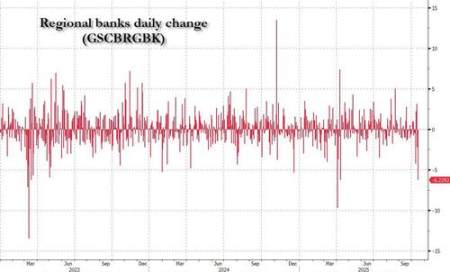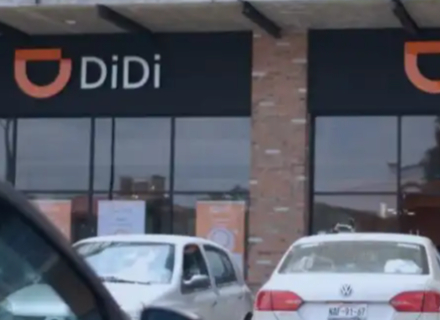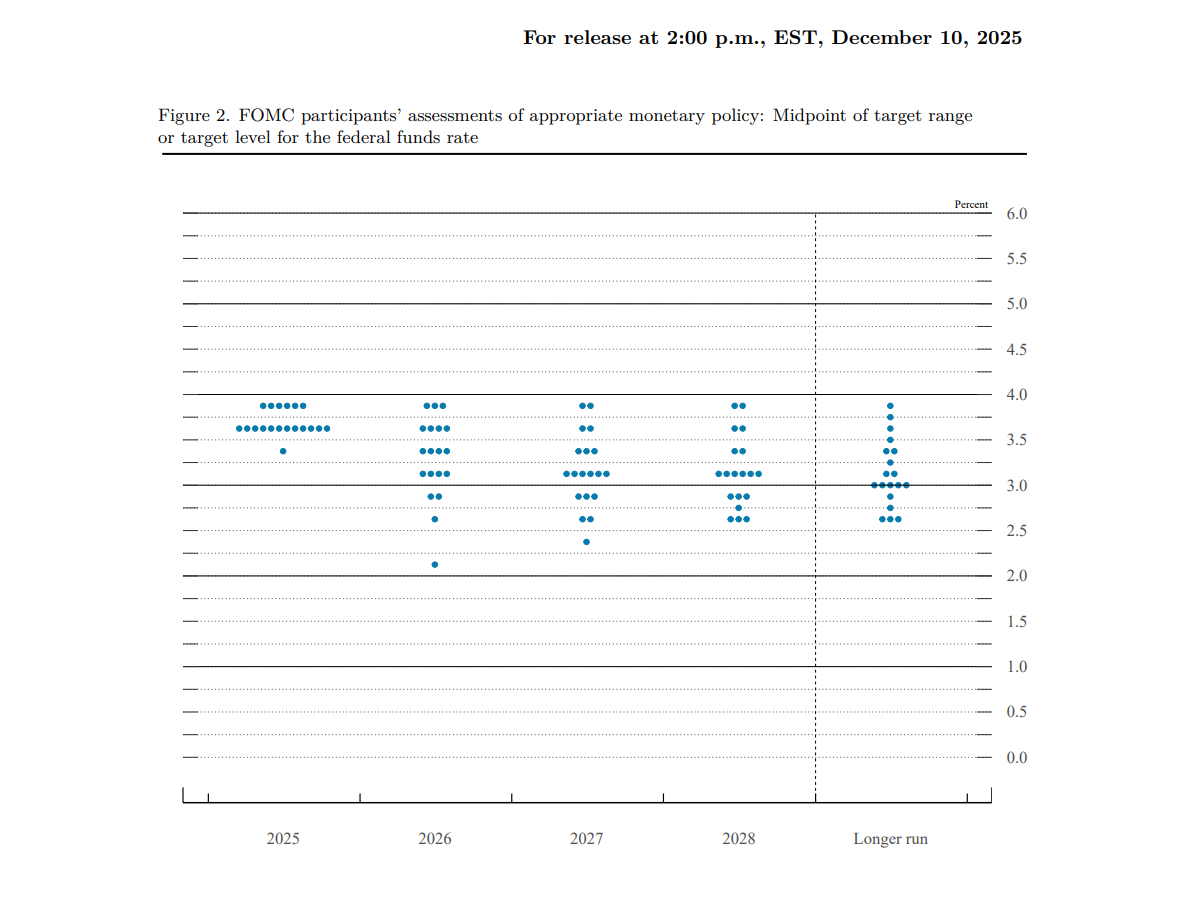US regional banks face another crisis, Goldman Sachs calls it "crazy"—here are the three questions clients care about most!
Investors are focusing on how these loans pass through the approval process, why three unrelated suspected fraud cases have been exposed within a month and a half, and whether small banks have relaxed underwriting standards to stimulate loan growth.
Investors are focusing on how these loans passed through the approval process, why three unrelated suspected fraud cases have been exposed within a month and a half, and whether small banks have relaxed underwriting standards to stimulate loan growth.
Written by: Zhao Ying
Source: Wallstreetcn
U.S. regional bank stocks suffered a sharp plunge on Thursday, marking their second-worst trading day since the collapse of Silicon Valley Bank in March 2023. Subsequently, the volume of client inquiries to Goldman Sachs traders "exploded," with investors most concerned about three core issues.
The crisis originated from Zions Bancorporation disclosing a $60 million provision for two loans and a $50 million write-off, a loss equivalent to 5% of its 2025 market-expected earnings. Court documents show this is the third suspected fraud case exposed within a month and a half, following First Brands and Tricolor, confirming JPMorgan CEO Dimon's warning that "there's never just one cockroach."
Goldman Sachs trader Mike Washington wrote in his latest daily market summary that the number of clients calling the trading desk to ask "what exactly is happening" is at a high level. Investors are focusing on how these loans passed through the approval process, why three unrelated suspected fraud cases have been exposed within a month and a half, and whether small banks have relaxed underwriting standards to stimulate loan growth.
Market anxiety is also spreading from the private credit sector to regional banks, with investors dumping financial stocks. U.S. regional banks collectively fell 7%, money center banks dropped 3.9%, Zions shares plummeted 13%, Jefferies fell 10.6%, Capital One dropped 6% due to credit exposure, and alternative asset managers fell 5%.

Goldman Sachs pointed out that such a dramatic market reaction triggered by a single borrower's disclosure "seems a bit crazy," but clients are now saying "it's already three cases." Many regional banks have yet to release earnings reports. Goldman Sachs financial expert Christian DeGrasse noted that until answers are available, the market remains highly vigilant about regional banks' NDFI (Non-Deposit Financial Institution) loan exposures.
A Single Loss Triggers a Chain Reaction
Zions Bancorporation disclosed via an 8-K filing that its California Bank & Trust division had commercial loans to two borrowers that defaulted. Goldman Sachs analysis shows that this $50 million write-off is equivalent to 7 basis points of the bank's core Tier 1 capital, about 5% of its 2025 market-expected earnings.
The documents show that the bank's internal review found "obvious misrepresentations and contractual breaches" as well as "other violations" by the borrowers and guarantors. The bank's subsequent default notices and accelerated repayment demands went unanswered. Zions has filed a lawsuit against the guarantors in California seeking full recovery and plans to hire external counsel for an independent review.
Court documents show that Western Alliance Bank is also involved in litigation against the same borrower, seeking to recover $100 millions. This discovery prompted investors to quickly review other regional banks' NDFI loan exposures, with concerns spreading across the sector.
The Three Core Issues Investors Care About Most
Feedback from the Goldman Sachs trading desk shows that the market is not worried about the contagion risk of a single credit event, but is instead focused on three deeper issues.
First, how did these loans pass through the approval process? This question is not only directed at regional and commercial banks but also at investment banks like Jefferies. On the day of the incident, Jefferies held an investor day, and some investors expressed dissatisfaction with management's handling of First Brands and Point Bonita risk exposures. Jefferies' stock fell 10.6%.
Second, why have three unrelated suspected fraud cases been exposed within a month and a half? Goldman Sachs points out that this is a "very important question" that makes investors feel "something is off." These three cases—Tricolor, First Brands, and the latest Zions borrower—each involve different borrowing entities.
Third, have small banks relaxed underwriting standards to stimulate loan growth? This concern is particularly troubling because it fits the narrative of a deteriorating overall credit environment. These problematic loans mainly come from NDFI loans, which have increasingly become a source of loan growth for regional banks, typically accounting for about 15% of total loans.
NDFI Loans Become the Focus of Attention
According to Goldman Sachs' Ryan Nash in the Q2 2025 handbook, NDFI loans account for about 15% of loans at regional banks, but the situation varies significantly between banks. These loans cover various types of financing to non-deposit financial institutions, including private credit funds and consumer credit intermediaries.
Trading performance on the day showed huge differences in NDFI underwriting quality among banks. Large banks outperformed small and regional banks by about 300 basis points, with some cases showing gaps as wide as 1000 basis points. Investors emphasized that not all NDFI loans are the same, and underwriting standards differ between banks.
The current market focus is on private credit exposures within NDFI loans, followed by exposures to consumer credit intermediaries. Goldman Sachs notes that the market appears to be in a "discovery phase," with no one really sure what is happening, but the tone of investor conversations has clearly shifted to "something seems to be going on."
More Risks May Be Exposed During Earnings Season
Goldman Sachs points out that although the new disclosure involves only one borrower (even though clients say "it's already three"), market sentiment has shifted significantly, with the prevailing view moving from wait-and-see to "there does seem to be a problem."
Goldman Sachs trader DeGrasse said, "All of this seems a bit crazy after the new disclosure from a single borrower," but the tone of client conversations has clearly changed. ZION has stated that while it believes this is an isolated incident, it plans to hire external counsel for an independent review.
There are still many regional banks that have yet to release earnings reports. Goldman Sachs expects NDFI loan exposures to become a key focus area in earnings calls and disclosures. Goldman Sachs emphasizes that not all NDFI loans are the same, and underwriting standards for NDFI loans differ between banks, as evidenced by the wide differences in bank stock performance today.
The market is closely watching the upcoming earnings season to determine whether this credit issue is an isolated phenomenon or a broader systemic risk.
Disclaimer: The content of this article solely reflects the author's opinion and does not represent the platform in any capacity. This article is not intended to serve as a reference for making investment decisions.
You may also like
"Validator's Pendle" Pye raises $5 million, enabling SOL staking yields to be tokenized
There are truly no creative bottlenecks in the financialization of Web3.

DiDi has become a digital banking giant in Latin America
DiDi has successfully transformed into a digital banking giant in Latin America by addressing the lack of local financial infrastructure, building an independent payment and credit system, and achieving a leap from a ride-hailing platform to a financial powerhouse. Summary generated by Mars AI. This summary was produced by the Mars AI model, and its accuracy and completeness are still being iteratively improved.

Fed rate cuts in conflict, but Bitcoin's "fragile zone" keeps BTC below $100,000
The Federal Reserve cut interest rates by 25 basis points, but the market interpreted the move as hawkish. Bitcoin is constrained by a structurally fragile range, making it difficult for the price to break through $100,000. Summary generated by Mars AI This summary was generated by the Mars AI model, and the accuracy and completeness of its content are still being iteratively updated.

Full text of the Federal Reserve decision: 25 basis point rate cut, purchase of $4 billion in Treasury bills within 30 days
The Federal Reserve cut interest rates by 25 basis points with a 9-3 vote. Two members supported keeping rates unchanged, while one supported a 50 basis point cut. In addition, the Federal Reserve has restarted bond purchases and will buy $40 billion in Treasury bills within 30 days to maintain adequate reserve supply.

